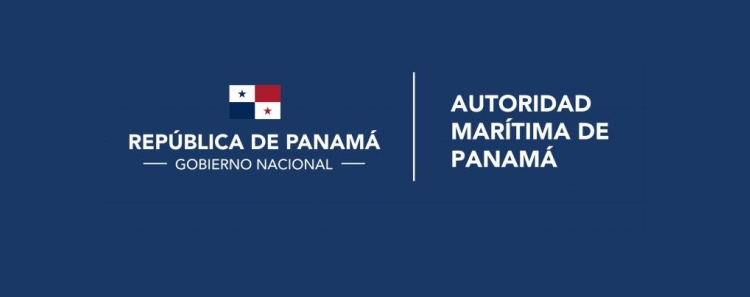Panama Streamlines Maritime Operations with the Rollout of its First Electronic Vessel Registry (REN) Phase
panamaconsulate 6 May, 2025 0 COMMENTS
The management and procedures related to vessel registration in Panama will take a qualitative leap toward modernization and efficiency in less than a week.
In a move of great significance for the global maritime industry, the Panama Maritime Authority (PMA) has marked a turning point in the management of its services with the launch of the first phase of its ambitious Electronic Vessel Registry (REN).
Panama, offers the world two vital registry services – ship registration through the General Directorate of the Merchant Marine (DGMM) and the Public Registry of Ship Ownership of Panama (DGRPN), which manages the documentation and the certification of property titles, mortgages, and naval liens. The implementation of an innovative customer service system, supported by highly trained specialists, is the cornerstone of this strategy.
Marta Aparicio, Director General of The DGRPN, emphasizes the urgency and vision driving this initiative: “We cannot subject our users to the unnecessary bureaucracy. We aspire to comprehensive, non-sectoral excellence, which is why we must be on par with, and even surpass, our competitors. The work is arduous and complex, but cannot be postponed.” In this context, the REN emerges as a response to the demands of the 21st century, easing real-time connection with global maritime sector players.
An Urgent Response
The REN has advanced through continuous testing and thoughtful adaptation, ensuring it evolves to meet the real needs of the sector. This ongoing process helps deliver essential features for efficient operation. Regular feedback sessions with developers play a key role in shaping a final design that aligns closely with users’ day-to-day realities.
One of the main goals of the REN is to unify the management systems of the DGMM and DGRPN. This integration will simplify procedures for both national and international users through an intuitive web-based platform. The tool is designed to enable remote access for inquiries, application tracking, and submissions—removing geographical barriers and significantly streamlining processing times.
Ms. Aparicio emphasizes the commitment to user experience and information security: “The team developing the REN is working on an increasingly user-friendly interface for electronic navigation. A comprehensive set of cybersecurity measures has been established to safeguard the confidentiality of operations and ensure the privacy of procedures; all without compromising the integrity of due diligence protocols.”
Rommel Troetsch, former president of the Panama Chamber of Shipping highlights the significance of this project: “The commercial activity of the Panamanian registry operates largely abroad and urgently needs modernization. This automation initiative should eventually extend to all port services, including auxiliary maritime industries, fuel sales, and other maritime operations overseen by the PMA—capitalizing on Panama’s highly strategic geographic position.”
The Voice of the Users
Giselle Veliz, of G&L Associate, offers her perspective: “The qualified electronic signature and the centralization of information in a single database are fundamental aspects of the REN. Not only does it update document validation, but it also provides greater certainty and reliability in transactions.”
Ariel Padilla, of Global Maritime Consultant Group Panama, comments: “A user-friendly interface and easy access to the new system are essential for successful adoption worldwide. The ability to submit inquiries and track procedures online will strengthen the relationship between the Panamanian registry and its global clients.”
The Secret is in the Details
As part of its continuous efforts to improve the user experience, the Panama Maritime Authority (PMA) has enabled online payments through its website, accepting both Visa and Mastercard. Additionally, physical points of sale have been established in Diablo Heights and Puerto Panamá, offering more flexibility for users. The DGRPN has also introduced a dedicated email address (consultasdgrpn@amp.gob.pa) to ensure timely and efficient responses to user inquiries.
Ramón Franco, Director General of the Merchant Marine at the PMA, emphasizes the strategic importance of this initiative: “Implementing modern, custom-built platforms is essential for maintaining our international leadership. These tools allow us to restructure response times and tracking processes for the Panamanian fleet, enhancing the experience for our nearly 9,000 registered vessels. This reinforces our standing as the world’s largest open registry.”
Panama’s launch of the first phase of the REN reflects its firm commitment to innovation and excellence in the maritime sector. This step forward in digital transformation not only optimizes the services of the Panamanian registry but also strengthens the country’s central role in global maritime trade. By paving the way for easier, faster, and more secure digital operations, Panama is ushering in a new era of efficiency for the global maritime community.
Panamá despliega la primera fase de su Registro Electrónico de Naves
La gestión y los trámites relacionados con el registro de embarcaciones en Panamá darán un salto cualitativo hacia la automatización y la eficiencia en menos de una semana.
En un movimiento de gran calado para la industria marítima global, la Autoridad Marítima de Panamá (AMP) ha marcado un antes y un después en la gestión de sus servicios con la puesta en marcha de la primera fase de su ambicioso Registro Electrónico de Naves (REN).
Panamá, reconocida por ofrecer al mundo dos servicios registrales vitales –el abanderamiento de naves a través de la Dirección General de Marina Mercante (DGMM) y el Registro Público de Propiedad de Naves de Panamá (DGRPN) que gestiona la documentación y certificación de títulos, hipotecas y gravámenes navales – da un paso firme hacia el futuro. La implementación de un innovador sistema de atención al usuario, respaldado por especialistas altamente capacitados, constituye la piedra angular de esta estrategia.
Marta Aparicio, directora general del DGRPN, enfatiza la urgencia y la visión que impulsan esta iniciativa: “No podemos someter a nuestros usuarios a burocracia innecesaria. Aspiramos a la excelencia integral, no sectorizada, por lo cual debemos colocarnos a la par, e incluso superar a nuestros competidores. El trabajo es arduo y complejo, pero impostergable”. En este contexto, el REN emerge como una respuesta a las demandas del siglo XXI, facilitando una conexión en tiempo real con los actores del sector marítimo a nivel global.
Una respuesta apremiante
El REN ha avanzado a través de rigurosas pruebas y adaptaciones. Este proceso continuo asegura que el sistema incorpore las necesidades del sector y ofrezca funcionalidades decisivas para una operatividad eficiente. Las sesiones de retroalimentación con los desarrolladores garantizan que el diseño final se ajuste a la realidad operativa de los usuarios.
Uno de los objetivos primordiales del REN es la unificación de los sistemas de gestión de la DGMM y la DGRPN. Esta integración facilitará a usuarios nacionales e internacionales la realización de trámites a través de una plataforma web intuitiva. La herramienta permitirá consultas, seguimiento y presentación de solicitudes de manera remota y mejores tiempos de gestión.
La licenciada Aparicio subraya el compromiso con la experiencia del usuario y la seguridad de la información: “El equipo que desarrolla el REN trabaja en una interfaz cada vez más amigable para la navegación electrónica. Se ha establecido un conjunto integral de medidas de ciberseguridad para salvaguardar la confidencialidad de las operaciones y asegurar la privacidad de los trámites; todo ello sin disminuir la fortaleza de las medidas necesarias para llevar a cabo una debida diligencia”.
Rommel Troetsch, expresidente de la Cámara Marítima de Panamá, resalta la trascendencia de este proyecto: “El área de negocio del registro panameño está en el exterior y requiere reforma inmediata. La automatización eventualmente debe proyectarse hacia todos los servicios portuarios, incluidas las industrias marítimas auxiliares, la venta de combustibles y demás actividades marítimas supervisadas por la AMP, aprovechando una posición geográfica más que privilegiada”.
La voz de los usuarios
Para comprender el impacto legal del REN, se consultó a abogados con amplia experiencia en el registro público de naves.
La licenciada Giselle Veliz, del despacho G&L Associate, ofrece su perspectiva: “La firma electrónica calificada y la centralización de la información en una base de datos única son aspectos fundamentales del REN. No solo se agiliza la validación de documentos, sino que se proporciona mayor certeza y confiabilidad en las transacciones”.
En la misma línea, Ariel Padilla, de la firma Global Maritime Consultant Group Panamá, comenta: “La interfaz amigable y la facilidad de acceso al nuevo sistema son la clave para su adopción exitosa por parte de los usuarios en todo el mundo. Realizar consultas y dar seguimiento a los trámites en línea hará más sólida la relación entre el registro panameño y sus clientes”.
El secreto está en los detalles
En un esfuerzo por lograr una superior experiencia del usuario, la AMP ha habilitado pagos en línea con tarjetas Visa y Mastercard a través de su sitio web. Adicionalmente, se han establecido puntos de venta físicos ubicados en Diablo Heights y Puerto Panamá. La DGRPN también ha implementado una dirección de correo electrónico exclusiva (consultasdgrpn@amp.gob.pa) para atender las consultas de los usuarios de manera oportuna y eficiente.
Ramón Franco, director general de Marina Mercante de la AMP, concluye: “La implementación de plataformas modernas a la medida es un pilar fundamental para que el registro mantenga su liderazgo internacional. Estas herramientas nos permiten agilizar los tiempos de respuesta y monitoreo de la flota panameña y mejorar la experiencia de nuestras casi 9,000 naves, consolidando nuestra posición como el registro estatal más grande del mundo”.
La puesta en marcha de la primera fase del REN demuestra el compromiso panameño con la innovación y la excelencia en la industria marítima. Al adoptar la transformación tecnológica, Panamá no solo moderniza sus servicios registrales, sino que también reafirma su papel crucial en el comercio marítimo global, construyendo puentes digitales que facilitan la operación de la flota mundial. Este audaz paso hacia el futuro augura vientos de cambio positivos para la comunidad marítima internacional.



